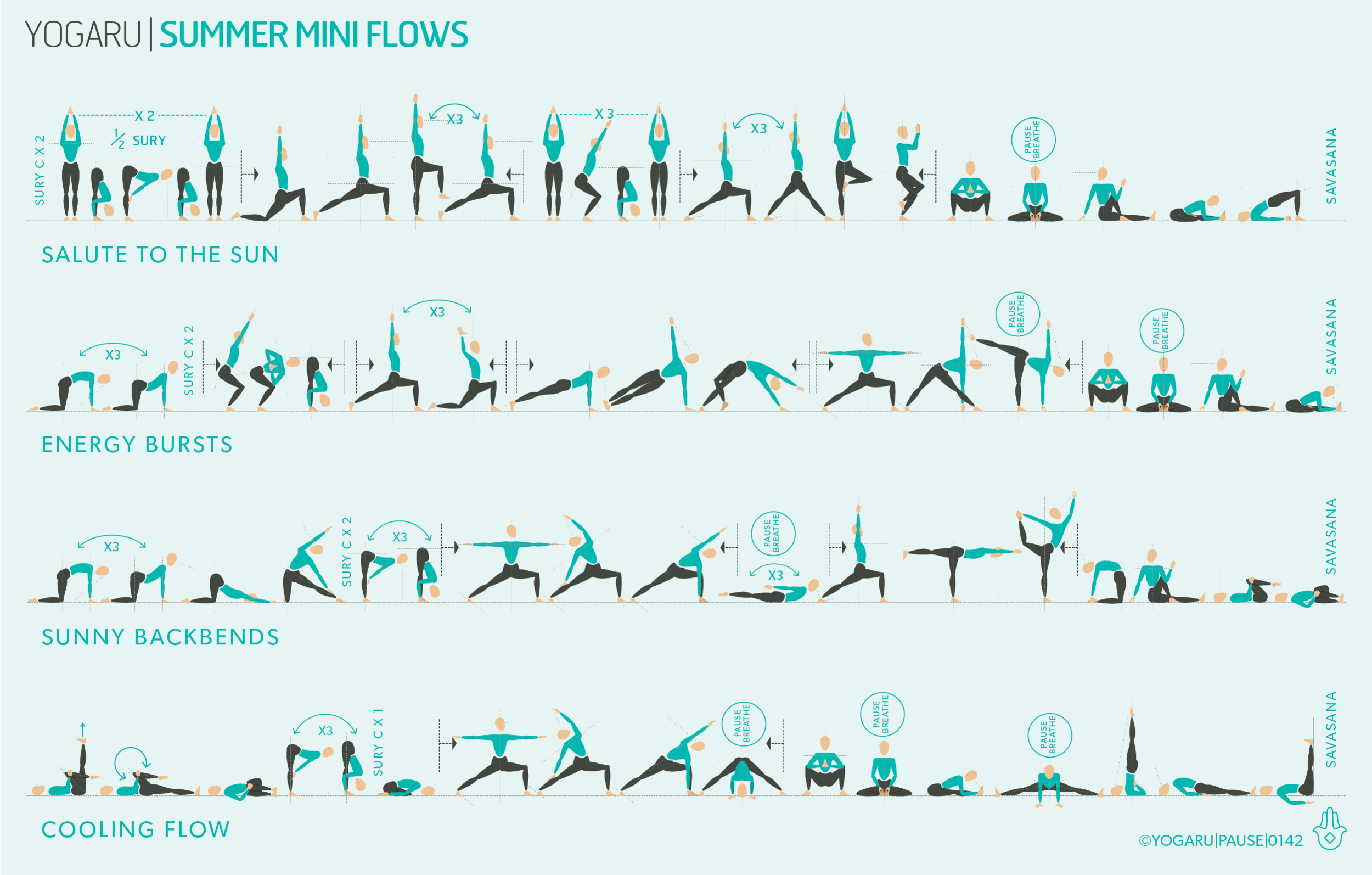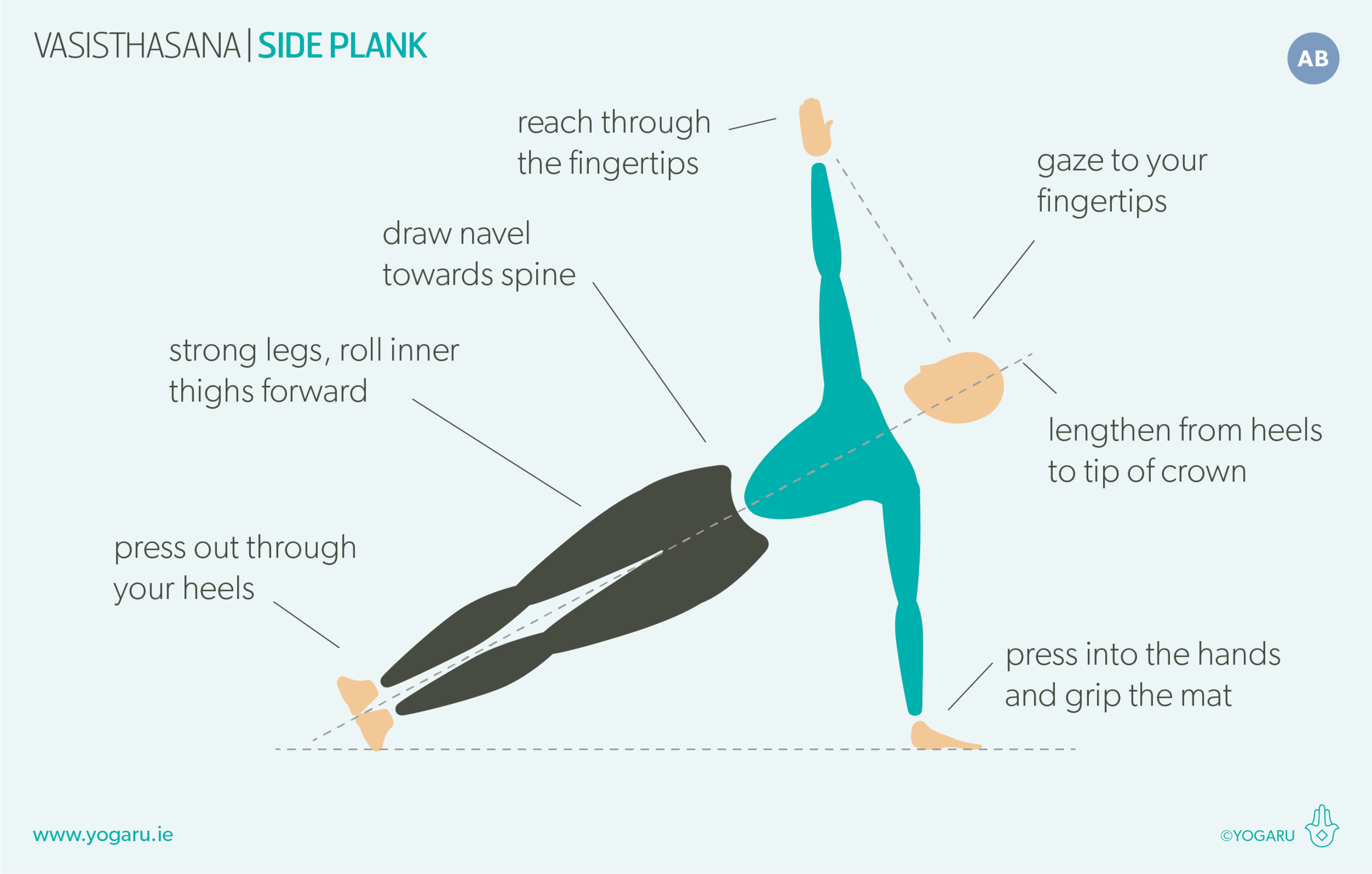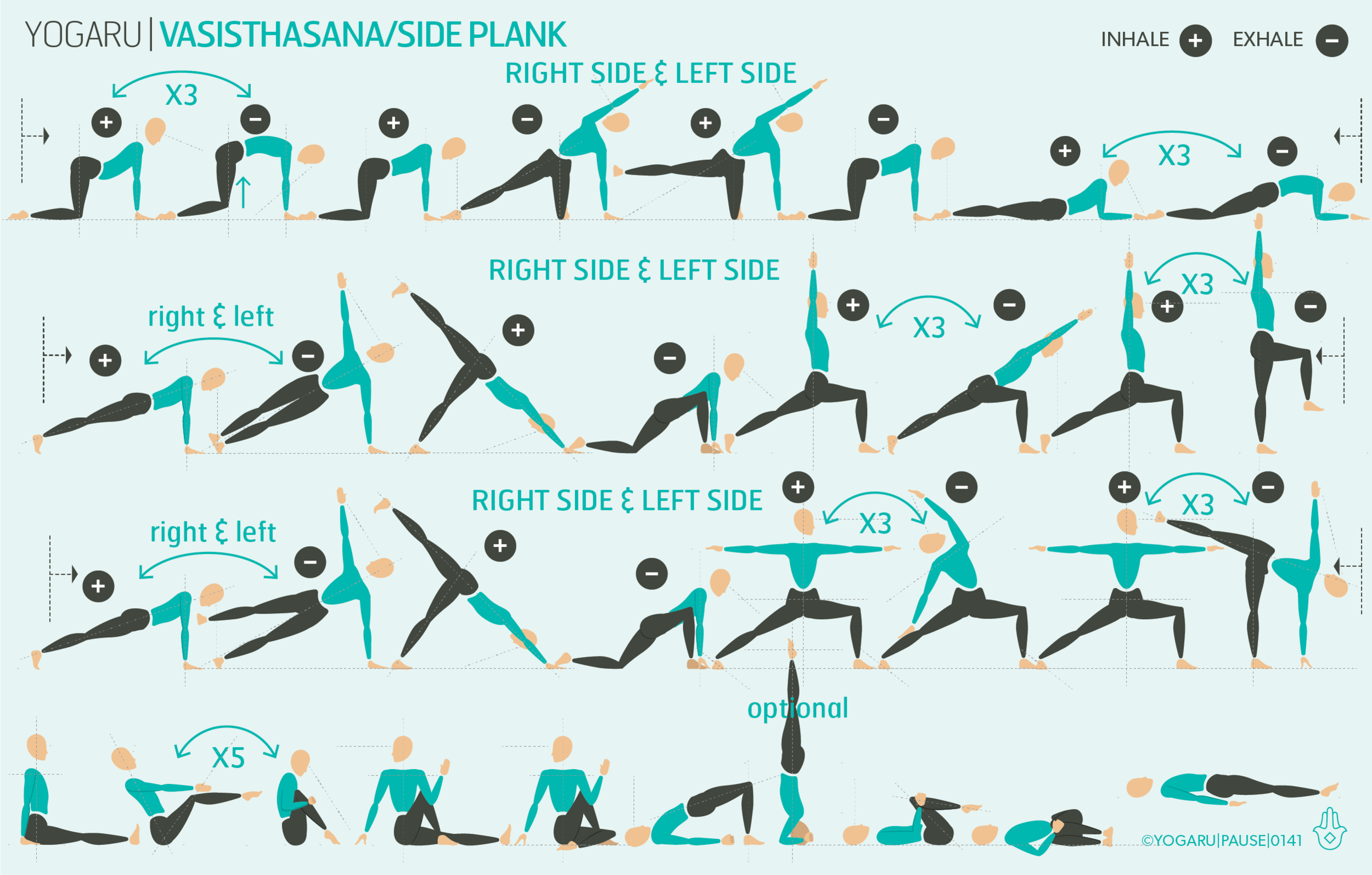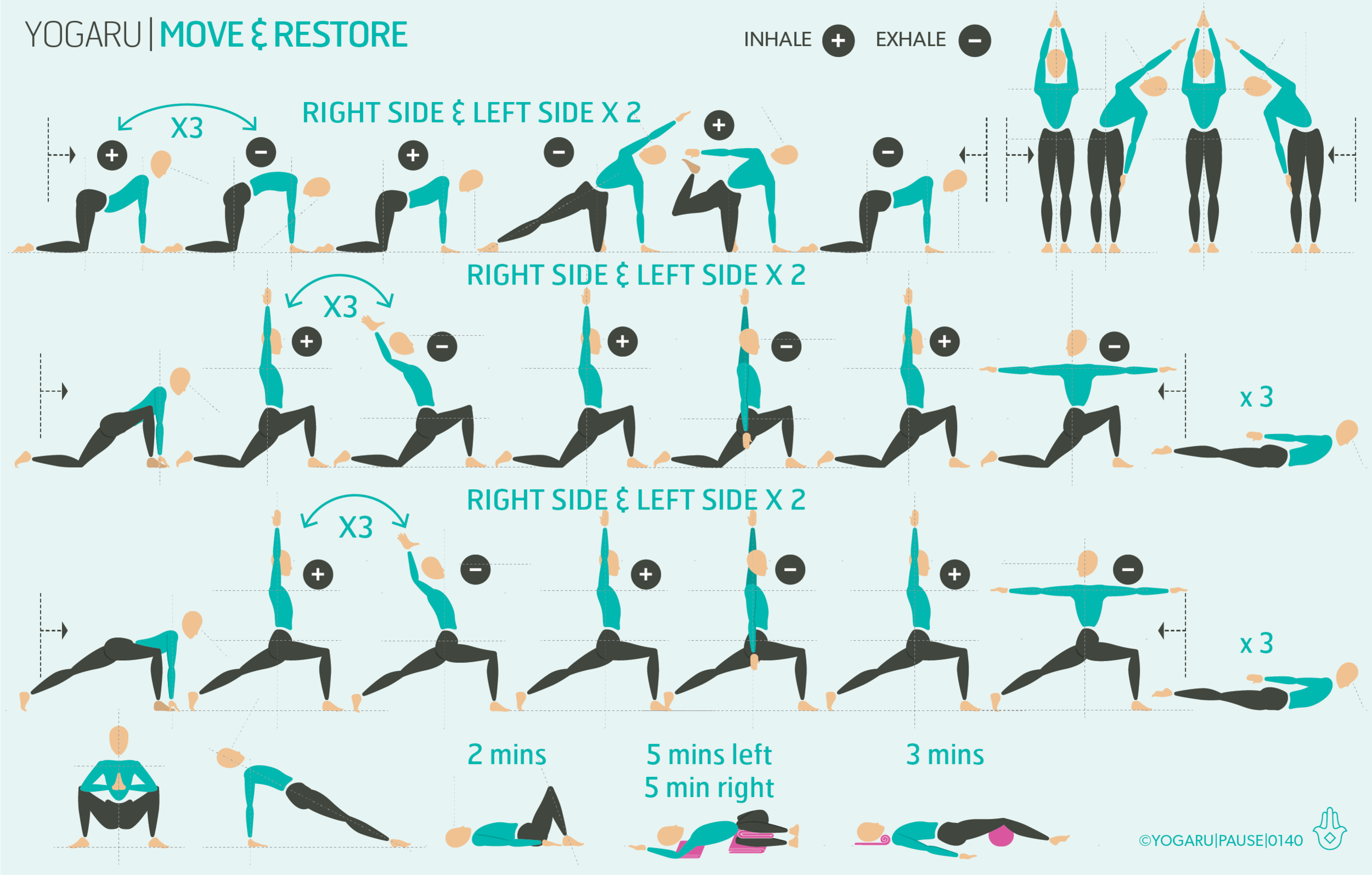This sequence is also available on YouTube.
DISCOVER YOUR SUMMER HOME PRACTICE
Summer is the perfect time to take the brave step of rolling your mat out and getting your home practice going. These sequences will work anytime of the day. But starting your morning off with your practice, before the busyness of the day takes over, is a great way to build a healthy habit into your daily routine. Getting up that extra few minutes early is much more doable when the sun is shining outside! You might even find you get the taste for practicing outdoors into your garden or your local park. You can also practice these mini flows on your summer holidays. They are the perfect way to stay active, while still getting all the benefits of your relaxing holiday vibes.
THE BENEFITS OF SALUTE TO THE SUN FLOW
The sun brings out the best in us and for that we salute it. This sequence has lots of standing poses with arms reaching for the sky. Standing poses are very strengthening to the legs, core and glutes. The addition of the arms raised, wakes up the shoulders and the arms and gives you a full body workout. They are also great for getting the circulation going and building focus, concentration and stamina. The standing poses where one leg is lifted will strengthen and stabilise the ankles and knees and are valuable support if you are a seasoned runner.
THE BENEFITS OF ENERGY BURSTS FLOW
Starting the day off with this sequence will set you up for whatever the day has in store for you. It’s hard to not feel a burst of energy in the afterglow of poses like Camatkarasana/Wild Thing and Ardha Chandrasana/Half Moon. They are challenging poses that require balance, concentration and a small leap of faith! Wild Thing has the added benefit of being an inversion (where the heart is above the head) and eases stress, tension and anxiety; boosts the immune system; aids good digestion; increases circulation; and most importantly, gives you that yogi glow to your complexion! There is also a healthy splattering of twists and side bends in this sequence which are very energising. Anytime you’re feeling tired sit up tall and take a twist to wake yourself up again.
THE BENEFITS OF SUNNY BACKBENDS FLOW
Backbends are the perfect summer poses. It feels really good to open up the chest and shoulders after months of guarding ourselves from the cold weather. Backbends are energising; aid good digestion; ease stress, tension, anxiety, fatigue, depression; and boost the immune system. On top of that already impressive list of benefits they press and stimulate the colon and help you stay regular over the summer months. Look for strength in the whole extent of the back body in locust pose to counteract all the sitting you might do through your day.
THE BENEFITS OF COOLING FLOW
We may not always need cooling down on your average Irish summer day but this sequence is also very calming and soothing. Forward bends ease insomnia, stress, tension and anxiety and are very relaxing and calming. If you’ve had a busy day and your mind is rushing this is the sequence for you. It can also be practiced in the morning if you wake up feeling less than refreshed and still need to get on with your day. Spend a few minutes in your Salamba Sarvangasana/Shoulderstand and feel the effect of the reverse of blood flow through the body.
EXPLORING SUMMER MINI FLOWS IN YOUR PRACTICE
Each mini flow will take around 15mins. If you would like to practice for longer add more rounds of Surya Namaskara C illustrated above in between each standing mini flow. When flowing through the mini flows indicated between the arrows, start with the right leg forward first, and then repeat this group of poses on the left side. Keep your transitions simple and when in doubt link pose through a Downward Dog or come back to Tadasana at the top of your mat and step back into your next pose. See how it feels to practice outdoors. You will find the surface you roll your mat out on can change the sensations of the poses. Grass adds a softness, challenges your balance and works all your balancing muscles, while sand adds surfaces to dig in and press your heels against in poses like downward dog. Being outdoors also helps you to really breathe deeply during your practice in the fresh air. Take your time and enjoy the poses that nourish you, remember you are the boss of your practice.
To save the images for personal use click and hold down the image until the ‘save image’ option appears; on Mac hold down ‘control’ and click the image to get the option box; on PC right click on the image to get the option box. Scroll down in the ‘option box’ and click ‘save image’.
Ruth Delahunty Yogaru






